Ah off-season, a shameless excuse to self promo some of the stuff I’ve written this year as a way of looking back at what the hell happened in 2021.
Here are the best pieces from the year, in chronological order.
Same old, same old at the Australian Open
‘Micro not Macro’ Match Analysis from Djokovic winning the Australian Open to kick the year off, with a focus on Djokovic’s superior big-point/pressure play. Novak at his best Slam down-under is always a beast, and Medvedev in just his second Slam final looked a little overawed. It’ll be really interesting to see whether that gap has closed further (tough to read too much into their US Open final) should they meet in Melbourne in January.
“There were three distinct and decisive moments (outlined above), one in each set, where Djokovic set up break points on Medvedev’s serve with astonishingly good returns. Three distinct and decisive moments where Medvedev would have stood a chance at erasing that pressure against pretty much anyone else with a swift swing of his trusty serve. But no one has ever negated serving advantage on a hard court quite like Djokovic.”
PTPA and tennis’ messy politics explode in March
“The leader of the ATP…”
“Get him out here… Fucking asshole.”
“Why am I supporting this fucking tour”
“You want to default me, I’ll gladly sue this whole organization”
Vasek Pospisil calls the ATP Chairman a ‘fucking asshole’, while also threatening to sue him, in the middle of a match at the Miami Masters. I go into detail why men’s tennis current structure has its critics, revenue shares from the biggest tournaments, why/how the PTPA (Professional Tennis Players Association) want change, and whether that change is actually likely. Amazingly, despite the fact this piece was written in March, it’s still almost completely relevant. Not much has progressed since then in the battle between the PTPA vs ATP despite the PTPA getting more organised.
Daniil Medvedev’s love/hate relationship with clay
“Spin is certainly not the be-all and end-all of clay performance. But it undeniably lets the very best clay courters do things that Medvedev and his fellow pancake boys probably wish they could, when playing on the red stuff.”
(above) From Monte Carlo, a look at why the ball-bounce and trajectory physics behind Medvedev’s gamestyle don’t necessarily make it as easy for him to thrive on the red stuff as some of the other players (and also whether there’s any correlation between rate of spin and success on clay)…
(below) …but as the clay season progressed, Medvedev was able to somewhat bend the surface to his own playstyle (partially thanks to the new-ish Wilson balls at Roland Garros), temporarily turning his relationship with the clay around thanks to some really interesting ‘surface atheism’. That is until he ran into the superior clay courter in Tsitsipas:
“Either Tsitsipas will expose Medvedev’s recent clay court improvement as a short-lived, statistical blip — demonstrating that the surface-atheistic gamestyle that Medvedev currently practices is in for a rude awakening in the hallowed church of the clay court gods known as Court Philippe Chatrier — or Medvedev will continue to push on, furthering his journey to become a sort of accidentally great clay courter. A man, and a game, for all surfaces?”
Tsitsipas starts to fulfil his clay court promise
I picked this piece of analysis (over some other clay court options) for a couple of reasons. Firstly, it’s some of the best analysis I wrote all season for how it narrows in on the matchup advantages Tsitsipas has against Rublev on clay, but also because this final felt like a significant breakthrough for Tsitsipas even though he had already won the ATP Finals.
“…both managed to overwhelmingly play their forehand when they landed their first serves, contributing to that 80%+ 1st serve points win rate for both. But their fates diverged clearly on 2nd serve: when Tsitsipas had to play a 2nd serve and the point developed, he was only forced to play a backhand as his serve +1 shot four times in the match. In stark contrast, Rublev had to play 16(!) backhands as his serve+1 after hitting his 2nd serves. No surprises then that Tsitsipas managed to win 68% of his 2nd serve points compared to Rublev’s 33%.”
hAwKeYe oN cLaY
I leveraged my annual symptoms of line-calling-on-clay-madness to explain why hawk-eye isn’t currently used as a line calling system on clay courts, and how much of a raw deal umpires are getting.
“We trust hawk-eye on hard and grass courts because it’s easy to trust. But it’s much harder to be equivalently trusting on clay.”
The Federer iceberg
From Geneva, a look at the less commonly seen, but absolutely foundational, side to Federer’s greatness as he tries to comeback one last time from injury.
“Federer’s success is not effortless, and it never has been.”
Naomi Osaka boycotts the press: sovereign athletes
One of the bigger talking points of the season was Naomi Osaka’s boycott of the press to protest how little room sports currently give their athletes to guard their mental health. I wrote about how press conferences are a broken (if still sometimes valuable) model for media access, why the power balance has already shifted away from mainstream press into the hands of the individual, and why tennis journalists have been a bit slow on the uptake to this trend.
“As a result, the press, and especially some of the less serious press like sports media, will have to confront all sorts of tough, existential questions in the months and years to come about their place in a world with increasing optionality for those looking to bypass them.”
Grass szn, Berrettini’s shiniest of weapons and Djokovic’s impenetrable armour
The best piece of match analysis I wrote all season. Berrettini deserves huge credit for being the second best grass courter in 2021 and, in my analysis of his Queens title, I wrote that it would be very difficult to see anyone apart from Djokovic stopping him in that form. Unfortunately for Berrettini, that’s exactly who he met in the Wimbledon final.
“Berrettini won’t bump into many foes on grass right now who can disarm him of those brilliant, shiny weapons and expose the chinks in the armour. But unfortunately for the Italian, Djokovic isn’t a normal enemy.”
‘Soft’ athletes
Pulling apart the obsession with shoving every possible controversy through the lens of whatever the latest culture war is/was. This time Naomi Osaka and Simone Biles were both taking some heat in July.
“…that nuanced debate about how ‘soft’ the world is simply doesn’t apply in every scenario of someone choosing to prioritise themsleves. That would be insane.
And yet here we are.”
Carlos in the clouds
From Umag, a look into 18 year old Carlos Alcaraz’ first ATP title, his unusual rate of progress, and what makes the Spaniard’s upside so exciting. This piece aged particularly well considering the manner in which Alcaraz went onto multiple breakthroughs as the season progressed — making a run to the US Open quarterfinals (the youngest Slam quarterfinalist in 31 years), the semi’s of Vienna, and taking home the NextGen Finals trophy. Not to mention some encouraging serving performances (one of his key areas of improvement) during the indoor swing.
“The key when looking for indications of a young player’s ceiling is which categories get hit and which categories stay constant when they meet better and better opponents.”
Sinner’s not standing still
From Washington, Sinner changes up his serve technique to try to solve how attackable some of his serving performances had been. A general look at the different serving stances in tennis and Sinner’s serve potency and potential.
“At the end of the day that’s all you can really ask for rising stars like Jannik Sinner: a mindset of development and a hatred for staying static against the backdrop of the perpetually moving machine that is the competitive landscape of pro tennis.”
Game, set, shit
In Toronto I took a look at whether tennis needs to loosen up a bit after Karen Khachanov got penalised for saying a naughty word followed by having a deeply philosophical discussion with the umpire.
“…if this sport could get a little less formal, a little less serious, and a little more real, I think the kids would still be alright. In fact they might even tune in more often.”
A new playstyle meta approaches
Aside from Mark Zuckerberg ruining the word ‘meta’ soon after this came out, this was one of my better macro pieces of analysis this year. From Canada, a look at serve and return trends over the past decade and how Medvedev (and Zverev) have pioneered a new, and devilishly difficult to beat, hard court playstyle — the ‘Big Serving Counterpuncher’. The reason I find this kind of meta analysis so interesting is mostly because it quite concisely lays out the competitive landscape at the very top of the men’s tour for the next few years (although Sinner, Alcaraz et al have yet to concretely insert themselves into that equation just yet).
“It’s going to be fascinating in the coming years to see whether the ‘big serving counterpunchers’ of Medvedev and Zverev will outperform the slightly more strength specific, but less balanced in terms of serve and return performance, players like Tsitsipas, Berrettini & Shapovalov.”
Sliderman
A deep dive into sliding, the evolution of hard court movement, and why Djokovic’s athleticism gives him an underrated edge in pressure and longer points.
“Novak’s balance on both forehand and backhand slides is on another level entirely. He can be offensive or defensive from either wing on the full stretch, and his spring loaded recovery thanks to strong but flexible legs negates positional advantage better than anyone. This all contributes to Djokovic being the hardest player to hit through, on a hard court, that has ever lived.”
Raducanu’s returns and teenage dreams in New York City
The US Open represented an amazing tournament for breakthrough teenagers, with 18 year old Raducanu (the first qualifier to win a Slam in the Open Era) facing off against 19 year old Fernandez in the women’s final (and 18 year old Alcaraz also going deep in the men’s event). Raducanu’s devastatingly deep, central return strategy was the standout feature of the final.
“By negating the servers advantage in this way, Raducanu is cratering one of the most important and usually reliable building blocks of opponent’s games: the ability to find dominant patterns on the 1st, 2nd and 3rd shots of their service games.”
The first four shots meme
Probably my 2nd favourite piece of macro analysis to write this year. Debunking some of the recent overemphasis and oversimplification when it comes to the 0-4 shot range in tennis strategy. Just because short points make up the majority in tennis doesn’t mean they always have greater influence over a match result than the longer points.
“The hyper-aggressive tools in modern tennis make the 0-4 shot range the expected majority. But the unexpected or uncommon is where the elite can shine. And we do not need to be teaching and coaching the next generations that the first four shots alone lay a path to greatness. Because when they come up against the future Djokovic’s, Nadal’s, Federer’s or even Medvedev, those longer points can and will make-or-break wins in the razor-thin margin game that is tennis.”
Murray standing still
From San Diego, a look at Andy Murray’s extraordinary comeback from hip surgery and how he may not quite have made up enough ground since his return to the tour against the backdrop of never-static, elite men’s tennis. Also a bonus in the form of a really interesting quote from Del Potro about which direction men’s tennis has gone.
“Murray may well find that those volleys are suddenly easier on the back of more aggressive foundations. Even just 1-2% more routine service games for Murray would represent many more opportunities where he can do what he does best, i.e digging in and making a nuisance of himself on return of serve, perhaps with less pressure if he’s holding serve just a tad more easily.”
Tennis and domestic abuse
Considering the ATP have three active players currently under investigation (either internal or criminal) for domestic abuse, the organisations’ need for a functional domestic abuse policy feels urgent. I took a look at examples from other sports, why tennis’ peculiarities will mean added complexity, and where this sport can go next.
“Tennis is lightyears behind those three American leagues, in part perhaps because of an old fashioned (and topically incorrect) notion that tennis players are supposed to be well behaved, but also because the structure of professional tennis makes it orders of magnitude more difficult to draft functional policy on such a serious and sensitive issue.”
The Future Of Tennis
This is one of the most important things I wrote all year, at least from my perspective. A deep dive into how badly tennis currently fails when it comes to understanding their fans, understanding how fandoms grow and connect in the age of fractionalized internet culture, understanding different types of fans, and tennis’ failure to capture the demand curve.
“What makes many modern fans fall in love with a sport is deeply unpredictable, often weird and obscure, and reliant on minuscule compounding exposure that has a tail longer than a Diplodocus. UGC caters to that variance of weirdness and long-tail exposure more capably than any traditional marketing or content strategy…”
Tennis in China and the silencing of Peng Shuai
As the season came to a close I wrote multiple pieces about Peng Shuai being censored by the Chinese state after accusing a high-ranking, former Chinese Communist Party official of sexual assault. This piece linked above is probably the best of the four pieces on this topic and explores the overarching differences between Western and Chinese state perspective, as well as the long game for sports in China.
“The idea of sport, which has always been an international force for good in the ways that it provides mutual understanding and passion no matter what language or culture fans speak or come from, having to become less international because of a mutual incomprehension on a much larger scale than itself, is an extremely sad proposition for many reasons. But as China and the West drift further and further apart, sport may well become just another casualty, at least temporarily, of deep and dividing idealogical differences.”
2021 Scorecard: Stefanos Tsitsipas
Lastly, and most recently, the beginning of an end-of-season series called ‘Scorecard’ where I take a look at all the improvement markers I track for some of the younger players on tour and explore whether their season moved the needle (or didn’t). Last week it was Stefanos Tsitsipas and a focus on his backhand return and backhand defence in rallies. The next one will be out this Sunday, but these are subscriber only issues (like all Sunday issues) so you’ll need to sign up here to get it. I’ve unlocked the Tsitsipas ‘Scorecard’ (and the other paywalled issues linked above) so new and free subscribers can see what they’re like before subscribing.
“…unless he can bump up those returns, and preferably sort out his slice backhand footwork and swing to make that backhand less defensively leaky in rallies, both his serve and tiebreaker abilities are going to be doing a lot of heavy lifting to compensate on hard courts next year if he wants to win the biggest titles…
Hell of a year.
Thanks, as always, for reading.
— MW
Twitter: @mattracquet
I’ll see paid subscribers on Sunday
The Racquet goes out twice a week, a (free) piece every Thursday and a (paid) analysis piece every Sunday/Monday. You can subscribe here:
I’ve left off a lot of other pieces that I really enjoyed writing this year. A couple of honourable mentions (in order): Tennis’ Identity Crisis, Nadal vs Tsitsipas Barcelona Final Analysis, Player Spotlight: Iga Swiatek, Djokovic Foils the Forehands in Paris, In Defence of Olympic Tennis, Carreno Busta Serves Up A Medal, Rublev’s Serve Problem, When in Flushing Meadows, The Teens, Medvedev Crosses the Moat, The Clouds Clear For Alcaraz, Sinner and Karatsev, Dimitrov slices Medvedev off the court in Indian Wells etc etc.
Note from Matt: You’ll notice quite an ATP heavy spread above when it comes to match analysis, with less written about WTA matches throughout the year. I’ve mentioned this before but this is largely due to how utterly awful the data availability is for women’s tennis compared to men’s (currently I rely on about 50% official or partner data and 50% my own match charting data). I’m in the process of trying to secure some better match data for WTA tennis for 2022, as ideally I’d be writing more match analysis about the women.



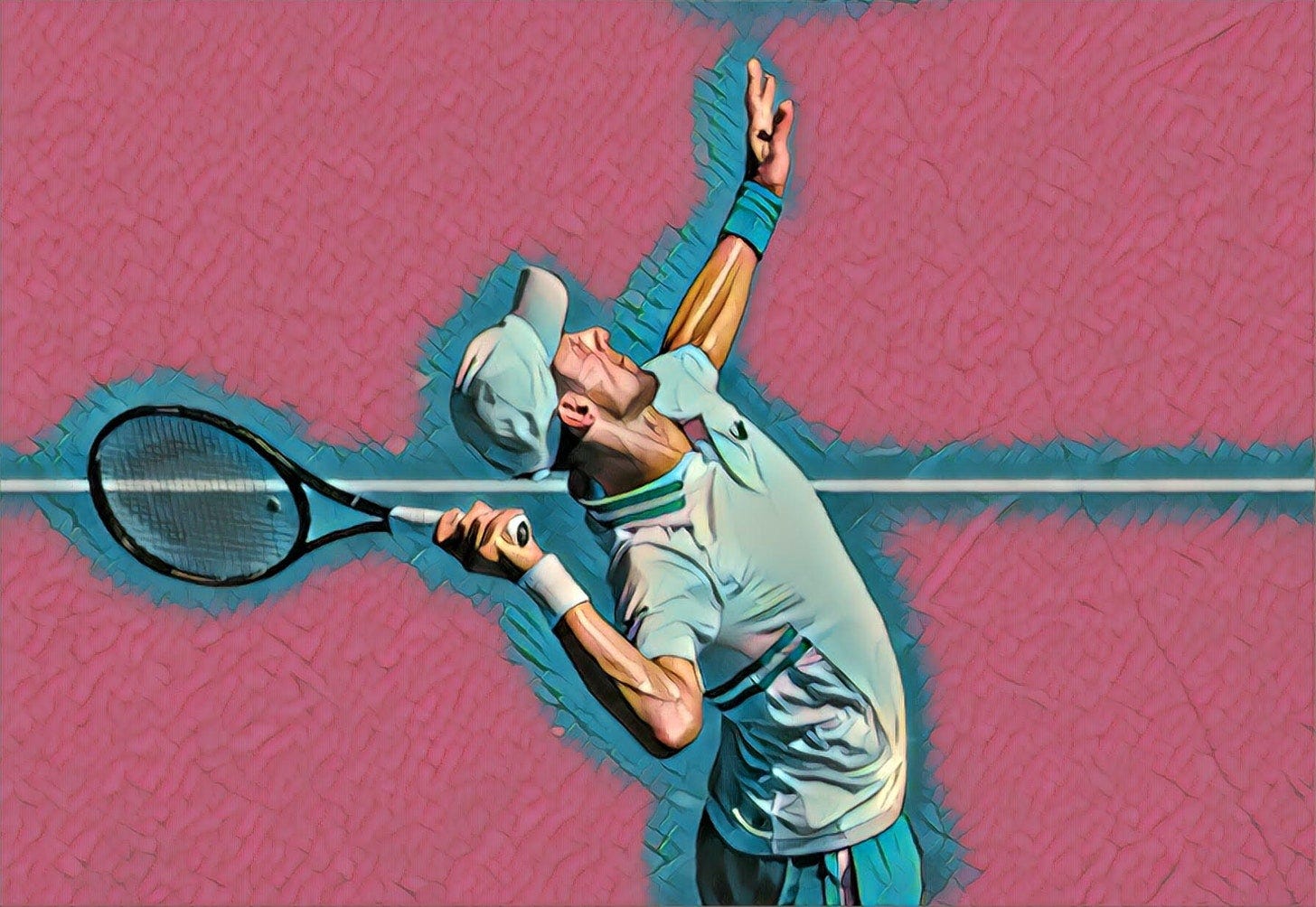



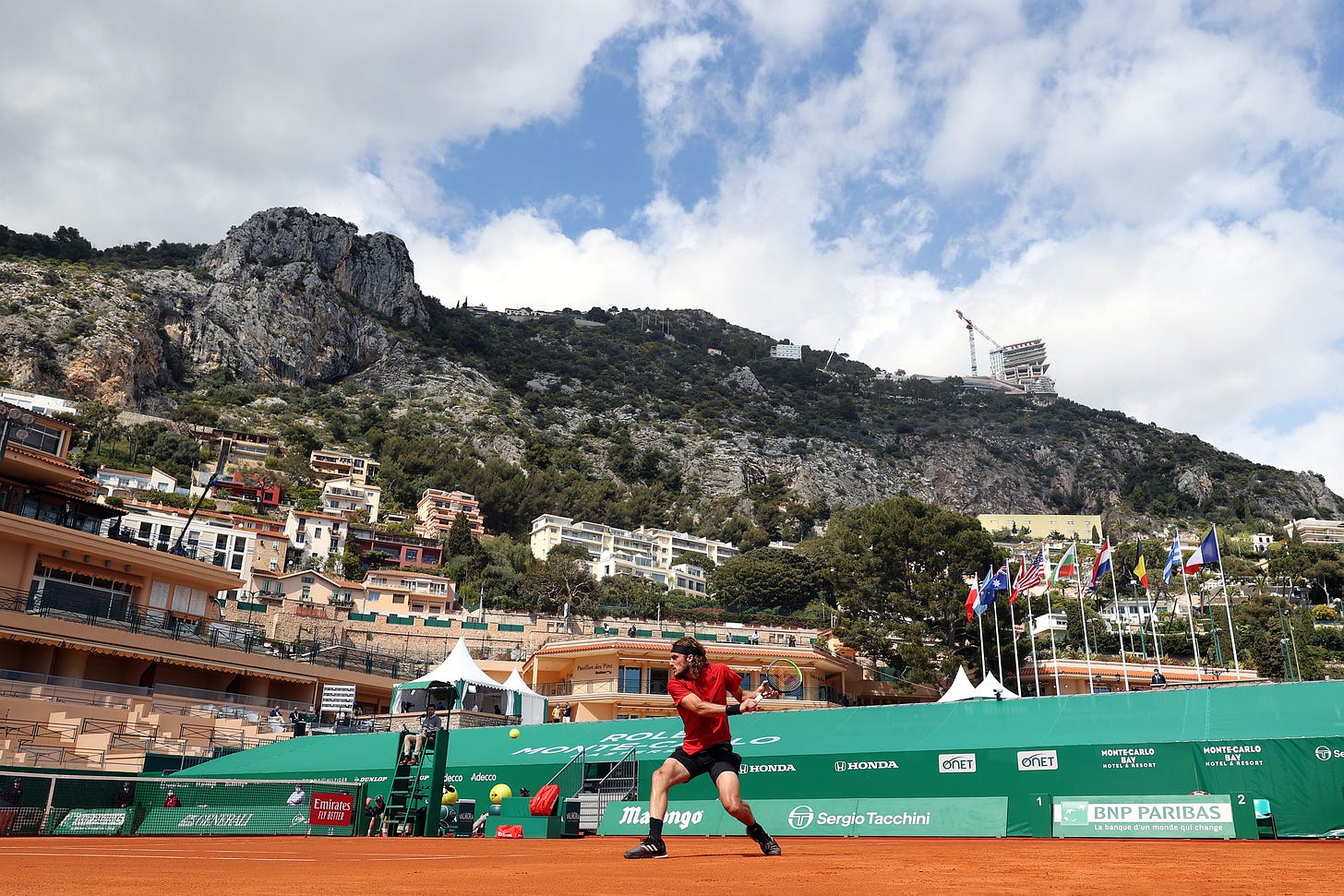
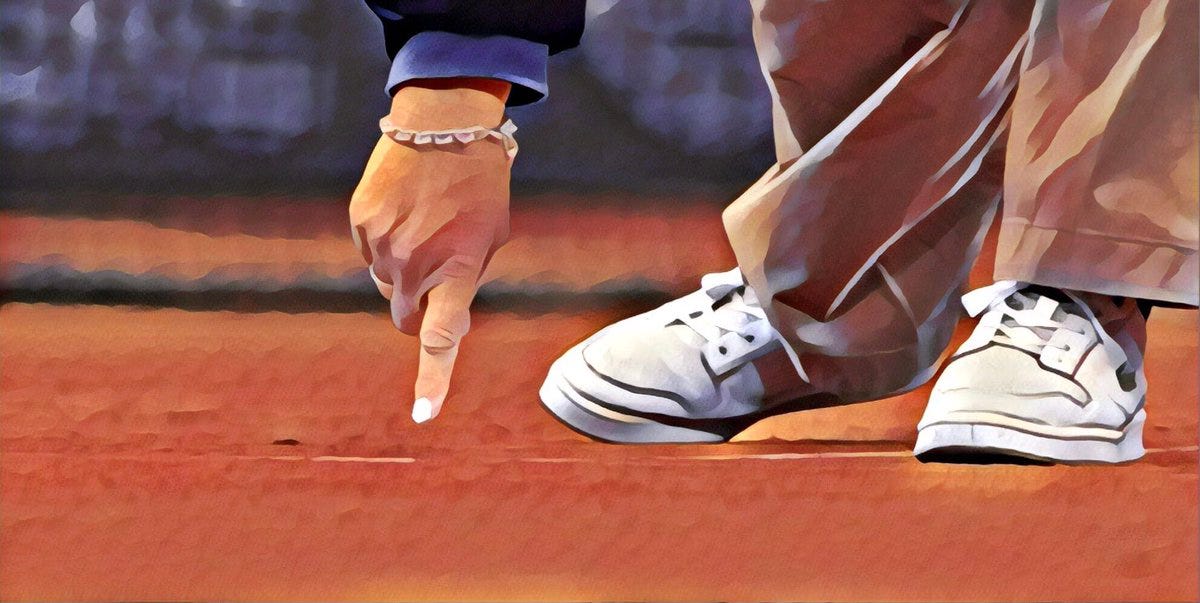
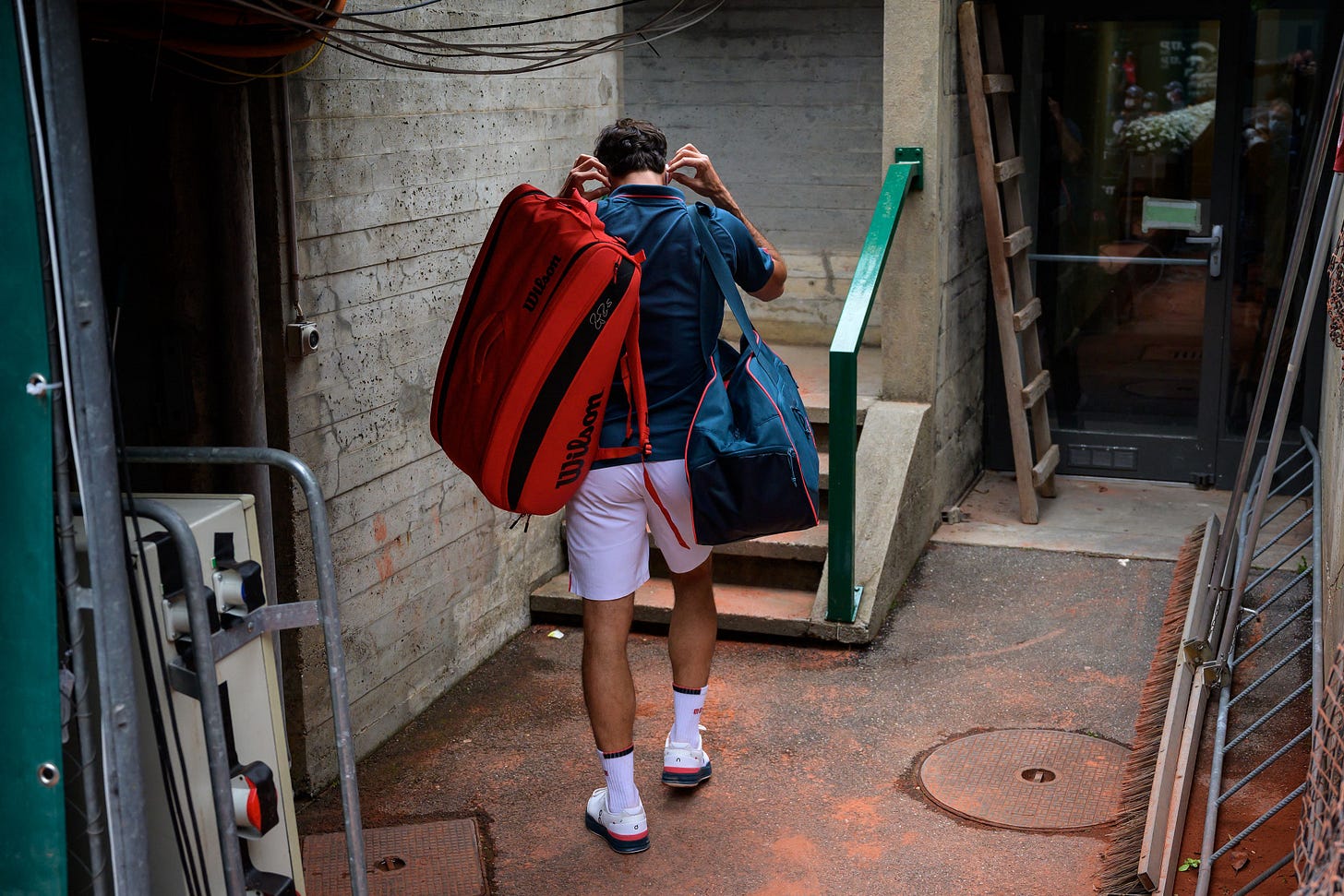





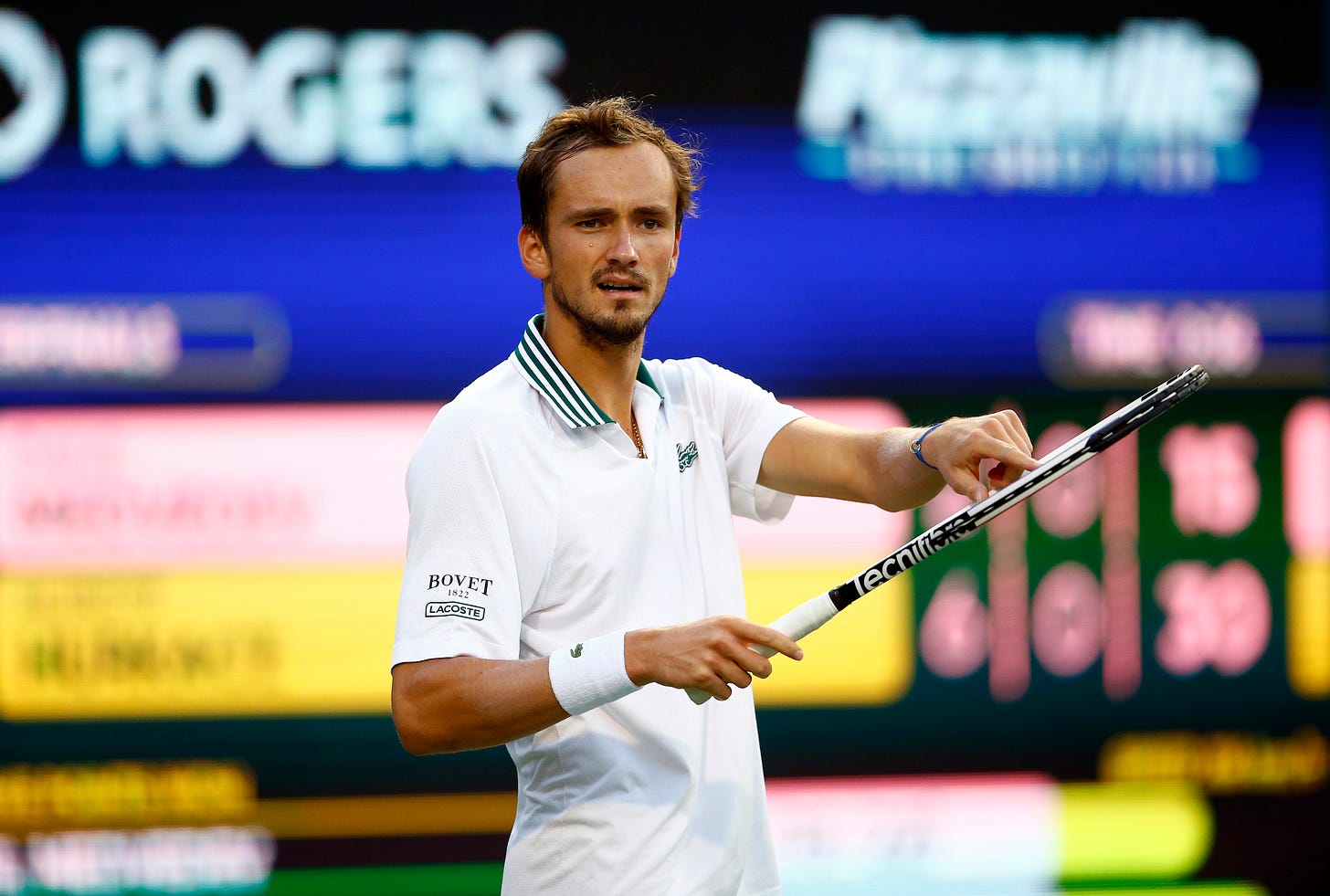

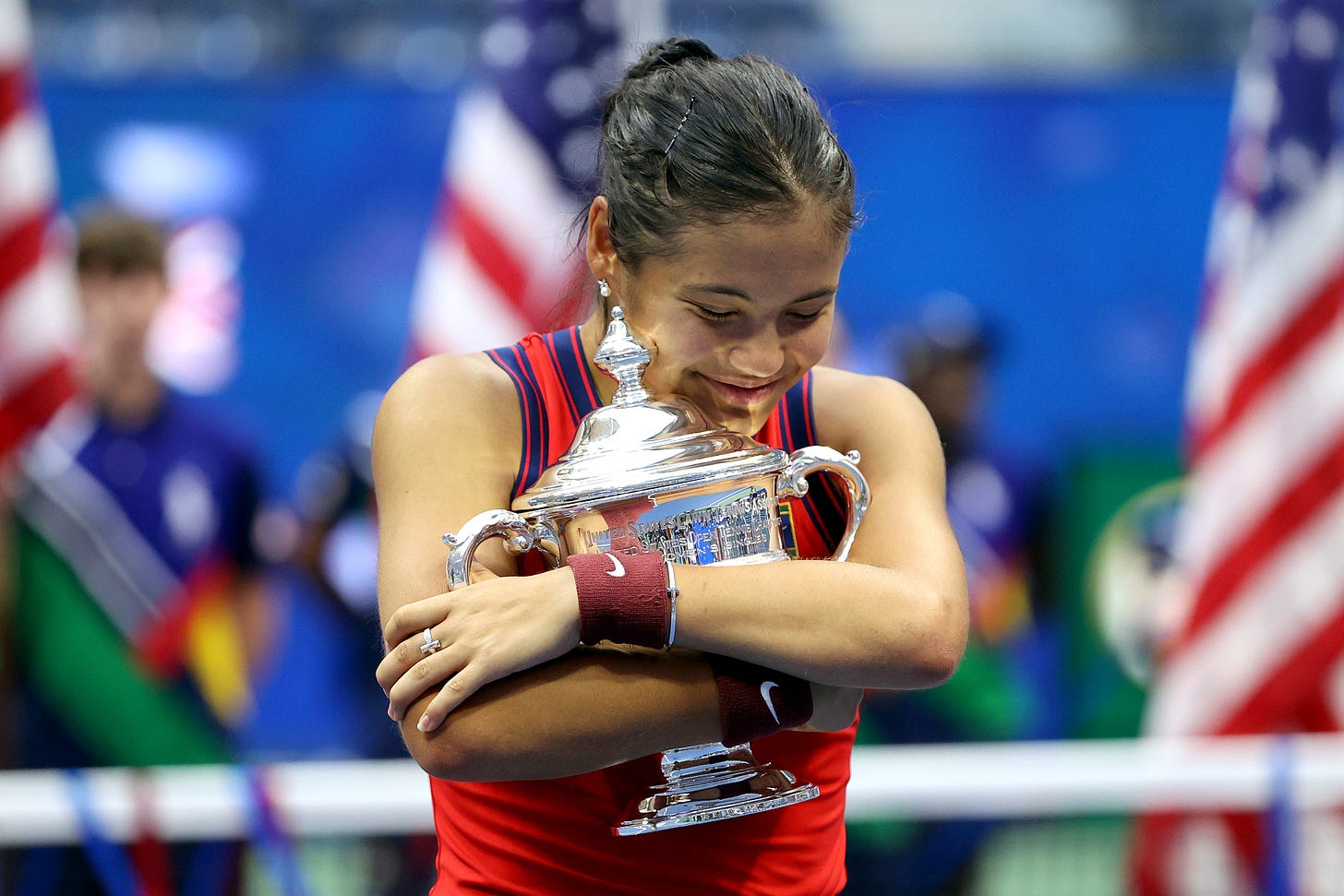

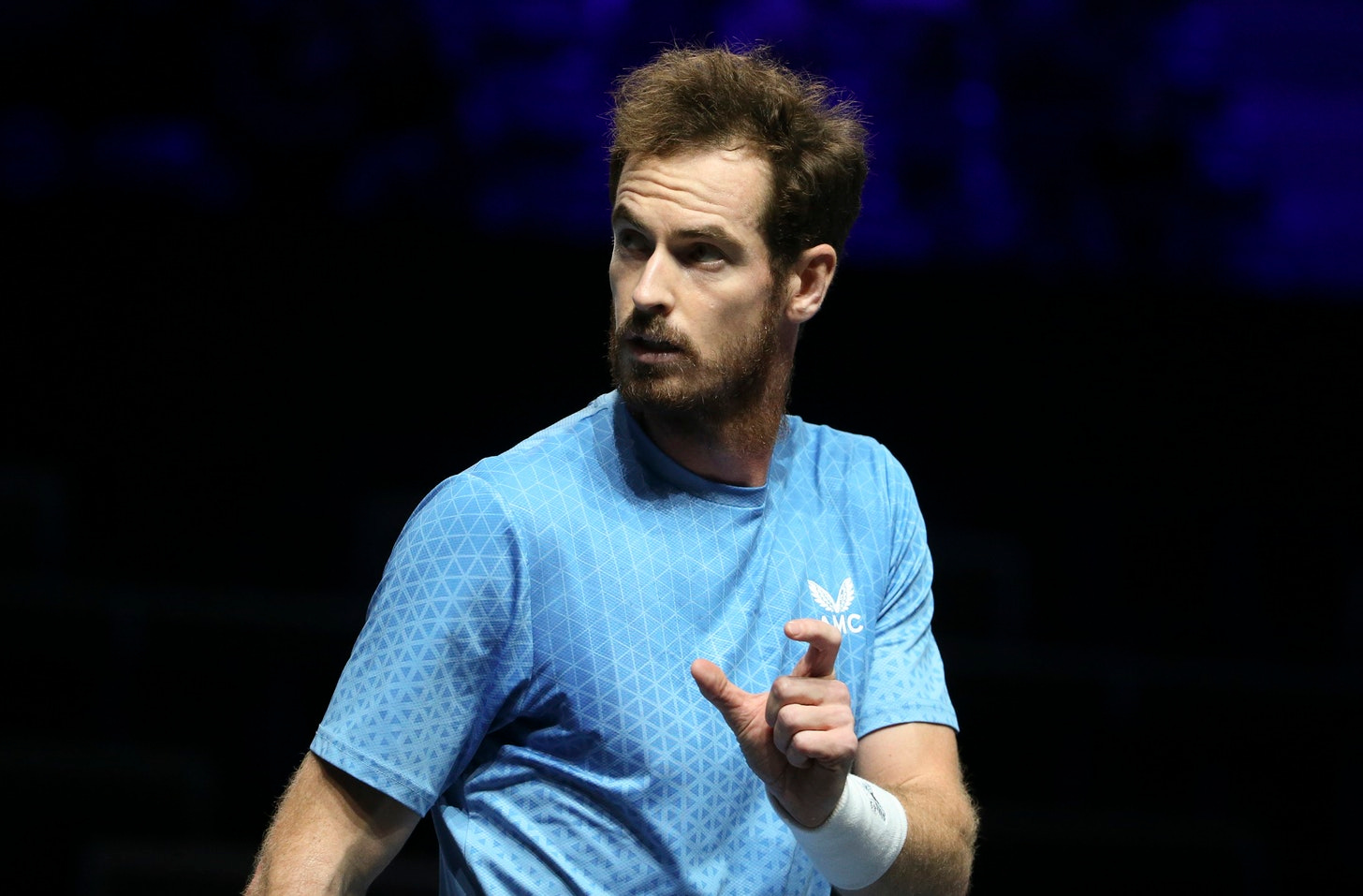


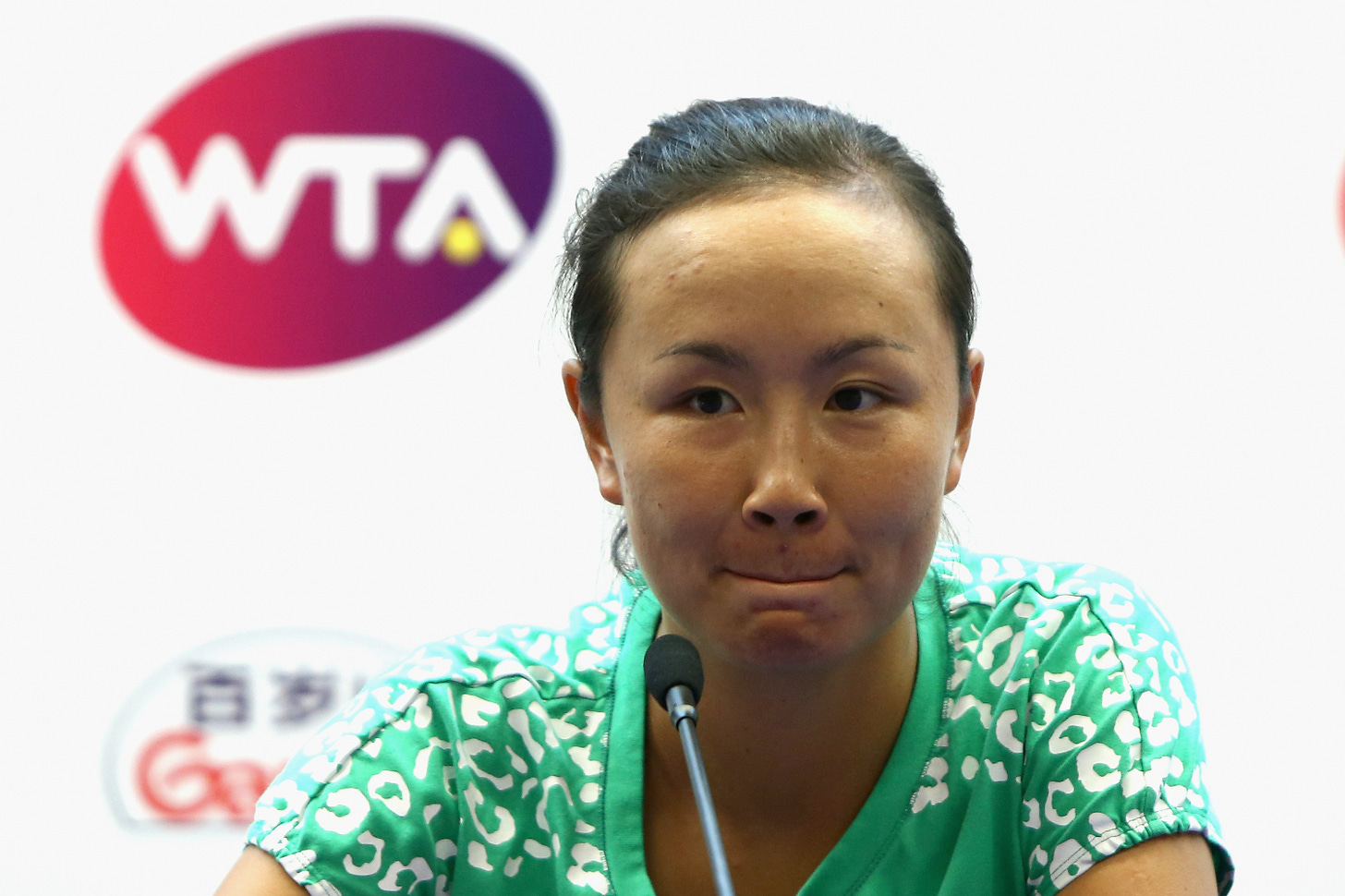

Incredible year of writing. Thanks for all that you do for this sport.